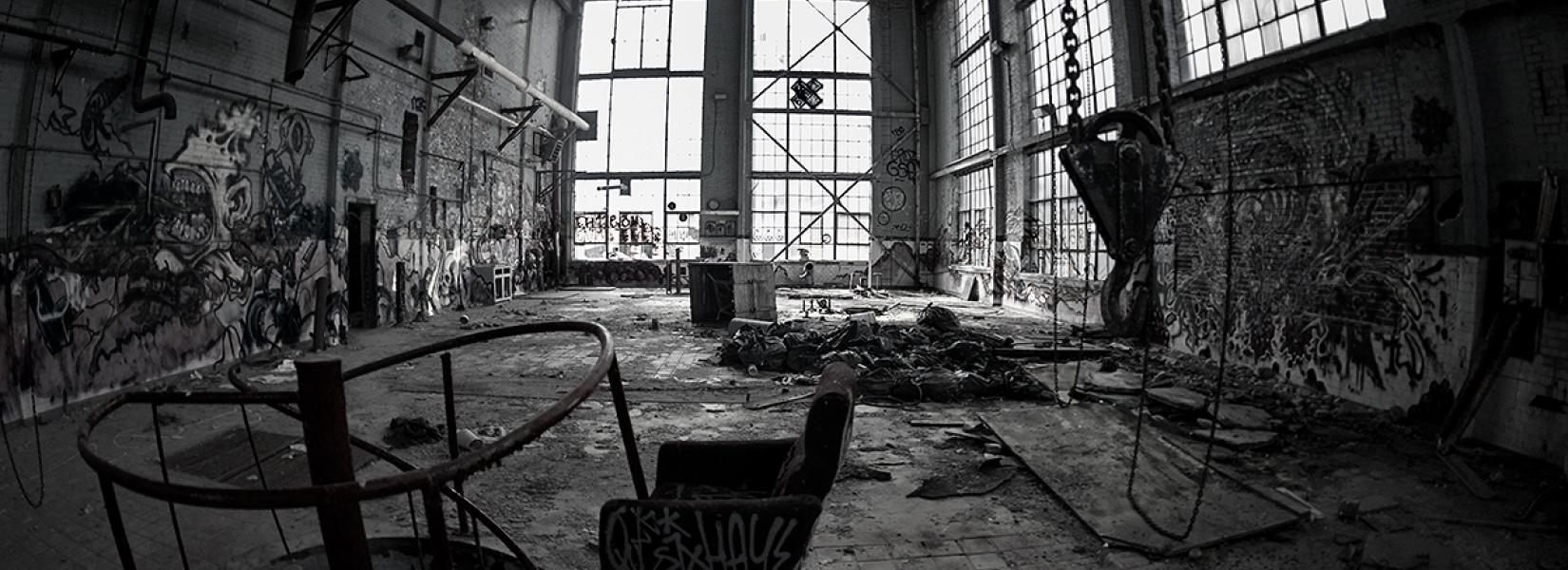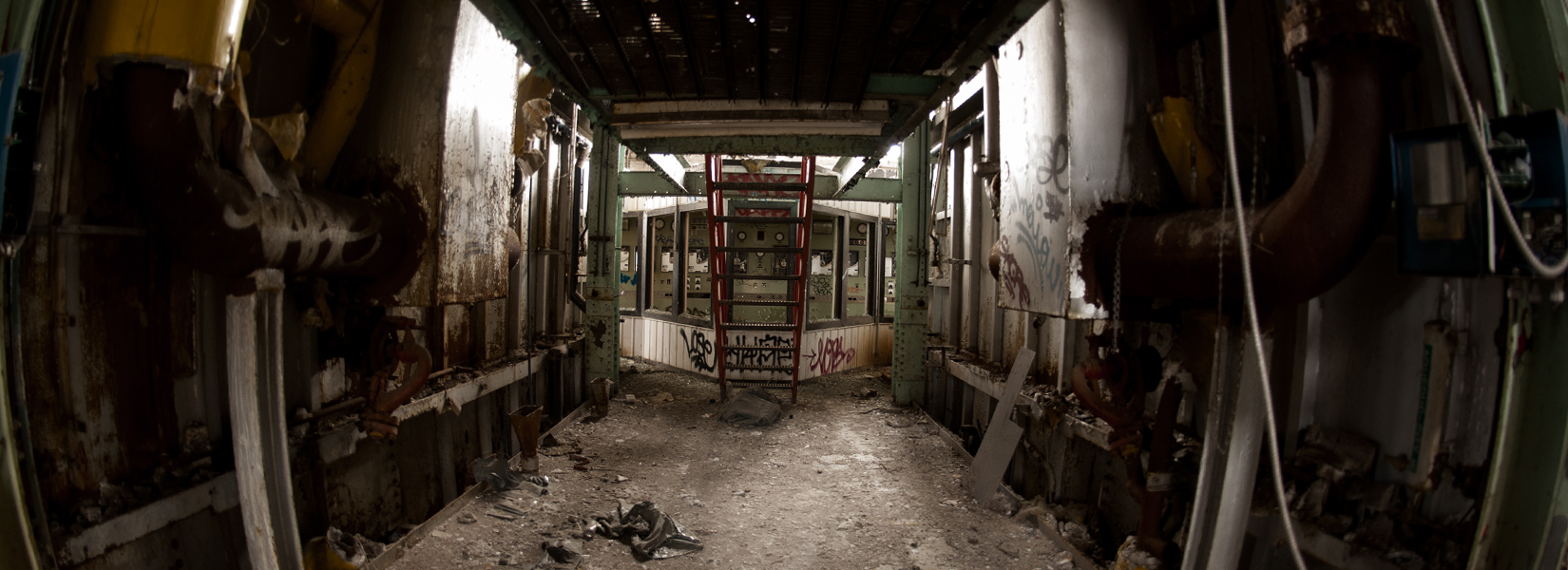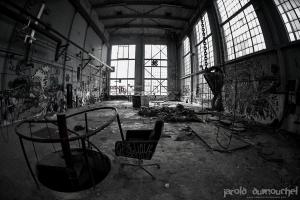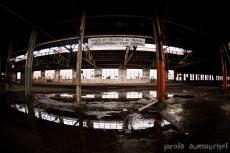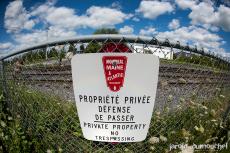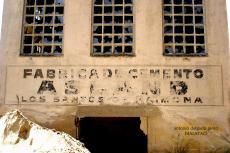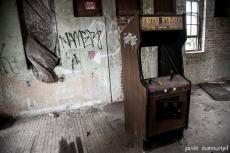Victim of the globalization of markets, the history of Stelfil Ltd. has suddenly stopped on March 28, 2008 for the factory and its hundred employees. The company has been decorated in 2002 in the Great manufacturing company category by the...
The Alstom's abandoned thermal power plant
Asbestos and graffiti
Sold for $ 1 in 2004 in exchange of the promise to clean up the heavily polluted soil, the land of more than 3.5 million square feet has not found its commercial and residential purpose promised by March Group, the current owner. However, when Alstom has closed this plant in 2003, several projects have been proposed for this impressive site. In 2005, there was a project about a fair center in connection with the relocation of the Montreal Casino to the Peel Basin. However, with the outcry from neighborhood residents, the project has been abandoned.
For its part, the Montreal Metropolitan Agency (AMT) has turned to the courts in order to buying the old railway workshops and its adjacent land, totaling 1.7 million square feet, in order to develop two maintenance centers evaluated at 355 million dollars. They accused the owner to require twice the value of the property. The AMT, a government organisation, also requested to the provincial government to proceed by expropriation way.
Today, despite the rental of few buildings of this huge complex and the destruction of a portion, it does not happen much here. But let's go back in the past of this property to understand its history.
From the Grand Trunk Raiway Company to Canadian National Railway Company (CN)
The history of the site dates back to the Grand Trunk Raiway Company. Founded in 1852 in Montreal, it was for decades the largest company in Canada. In 1856, the company opened in Pointe-Saint-Charles the biggest railway workshops in Canada and gradually hire more than 2,000 workers. Remember also that the Victoria Bridge will be inaugurated four years later, which will add a railroad way to access to Montreal.
In 1916, while many railway companies are on the brink of financial collapse, the federal government nationalized and creates the National Railways of Canada, which will become the Canadian National Railway Company (CN). In a few years, they become owners of a large number of railway companies, including the Grand Trunk in 1923, four years after the bankrupcy of the company. In 1995, the government privatize CN.
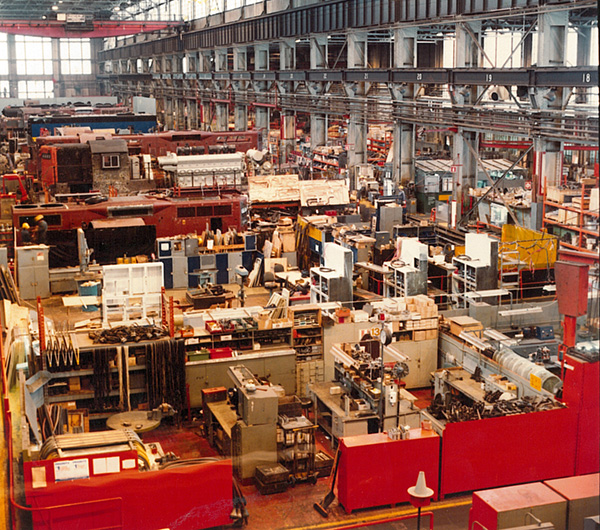
Interior of the CN locomotive shop in the 1970's. Photo credit: SUMSKILLZ
On the current site of Pointe-Saint-Charles, the facilities were built, for most of them, in the 1920s and 1930s. The administrative building, meanwhile, has been built in 1899. While some portions of the site will be destroyed (illegally) by the current owner, there is still nine major buildings including the locomotive shop, the largest building of the property. Thus, the site includes:
- The wheel assembly workshop and wagons transformation;
- The wagon shop;
- The testing workshop;
- The guard;
- The administrative building;
- The foundries;
- The locomotive shop;
- Stores;
- The thermal power plant.
It is in the latter that we have focused our visit. Built in 1928, the thermal power plant is now contaminated with asbestos, although an partial decontamination has been done. The floor is covered of asbestos residues.
Nevertheless, the site is interesting and very photogenic. It must be found on the Internet a lot of shots and especially its spiral staircase and its huge hook. Although the site is guarded, we had the chance to work without any problem. We also met other urberxers.
So you will find here some of the many photos taken during our visit. Enjoy!
Related content
Well, to be honest, the railway Montreal Maine & Atlantic Railway site we visited is not a real urbex site. At least not yet. But between you and me, it should not take long.
A story that everybody hear aboutWhether you live in...
When I was a kid, I often traveled with my parents and my brothers in Los Santos, the village where I was born. Each time when we approached, my father used to say: "Beware, I will give a penny to the first one who will see the smoke of the plant...
Located on the banks of the Canal Lachine, the old Cie de recyclage de papier de Montréal inc. factory have been destroyed in part since 2009. Today, there are only the old building located behind the front store who is still there.
When...

